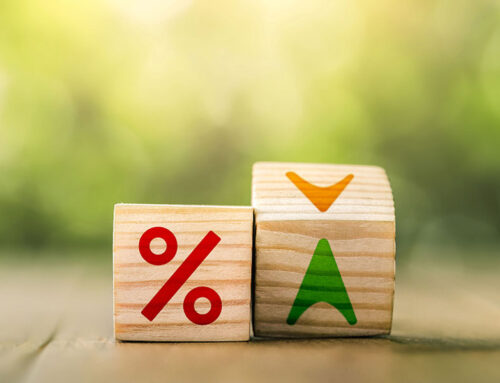Most real estate investors are fixated on markets with rising property values, and it’s no surprise why. A rising tide lifts all boats, and it certainly makes the prospect of finding a buyer for a recently-renovated home all the easier. But the often-neglected market segment with properties priced under $100k can be extremely worthwhile too, even if those properties tend to live in markets where prices aren’t increasing very quickly.
With my business, picking up a couple of sub-$100k homes in rural Virginia and renting them out was key to establishing the basic cash flow I needed to make renovations on more expensive properties in hotter markets. If I hadn’t gone downmarket at the start, I would’ve struggled to find enough financing at an acceptable interest rate to buy normally-priced properties later on. Of course, locating those first two inexpensive properties wasn’t easy, and I had to perform plenty of management duties for my tenants, but it was worth it in the end.
Homes under $100k aren’t advertised as much as properties with wider appeal, and they’re sometimes so cheap that sellers are unwilling to budge on selling prices. Still, if you can learn how to find these bargain bin properties, it’ll be a boon for your company, so let’s learn what makes them valuable and why.
Why It’s Worth Finding Investment Properties Under $100k
Cheaper properties have a handful of advantages that make them worth chasing in some markets, especially for investors that are just getting their business launched.
In particular, investment properties under $100k:
- Are easy to add significant value to with renovations or additions
- Often incur a low tax burden
- Are approachable with less financing than more expensive options
- Can often command higher-than-expected rental income
The appeal is pretty straightforward. After buying an inexpensive property, you can make a few repairs and then rent it out for years, generating an income stream for a relatively small initial investment. Or you can try to make more extensive renovations, sell the home at a much higher price, and then do the same thing again. Either approach is a good way to get your company rolling during its first few years, and you don’t need much in the way of starting capital. Having as much as $20,000 in the bank could be enough to make a purchase, depending on the type of financing you choose to use.
What’s more, depending on where the property is located, you may find that it’s easier to locate reliable long-term tenants. Super cheap homes tend to be in rural or wilderness areas, where people move around less and where the market is generally much slower-paced. That last tidbit also means you won’t face nearly as much competition when you’re bidding for homes under $100k than you might when bidding for expensive properties in more central locations.
Challenges With Low-Cost Properties
As great as one can be, an investment property under $100k also tends to have a unique set of obstacles that can make it difficult to work with.
First, these types of homes are often tough to find, especially in suburban and urban markets where prices have ballooned in recent years. You certainly won’t find many eligible homes on MLSs, and you’ll probably struggle to find them via foreclosure listings too. Likewise, public records searches aren’t as fruitful of a source of leads as one might hope. Inexpensive homes are less likely to have liens or unpaid back taxes; their mortgage values and tax burdens are so small that people are unlikely to fall behind. In my experience, looking off-market is often the best way to find leads in this segment, but that entails another set of challenges.
The unpleasant truth is that for many low-cost homes, property values are very low for a reason. Typical reasons for rock-bottom property values include:
- Having minimal land
- Municipal restrictions on the use of the land or on the renovation of the property
- Being in dilapidated or condemned conditions
- Being far from reliable infrastructure, commercial centers, or other attractions
- Unattractive or hazardous surroundings
- Being located in a shrinking or otherwise declining housing market
Most of the items on that list make these types of homes unsuitable or prohibitively difficult for flipping. It can also be hard to have enough cash on hand to buy them without the help of outside financing, which can make the total cost of a purchase significantly higher. But in the right market with the right set of financing sources, valuation skills, and lead-finding tools, investors can still find and renovate investment property under $100k.
Getting The Investment Capital And Leads Your Business Needs To Grow
If you aren’t sure where you should get started with your hunt for low-cost homes, don’t worry— you’re in the right place. Hitching your wagon to a nationwide real estate investing franchise is a great way to start targeting deep downmarket homes, and for my business, franchising with HomeVestors® made all the difference.
When you become an independently owned and operated HomeVestors® franchise owner, you’ll gain a reliable source of both on-market and off-market leads. And you’ll have access to hard money financing to buy the right properties once you find them. You’ll learn how to use breakthrough property valuation software to identify the best opportunities, and you’ll get mentorship from some of the best real estate investors in the business to ensure that you know every trick of the trade.
Without HomeVestors®, I would never have gotten my collection of rural rental properties for under $100k off the ground. And as a franchise owner, I’ve been able to grow my business to heights I never imagined before.
Want to learn more about how to find and purchase investment property under $100k in your local market? Request information about becoming a HomeVestors® franchise owner today.
Each franchise office is independently owned and operated.
Contact
"*" indicates required fields






